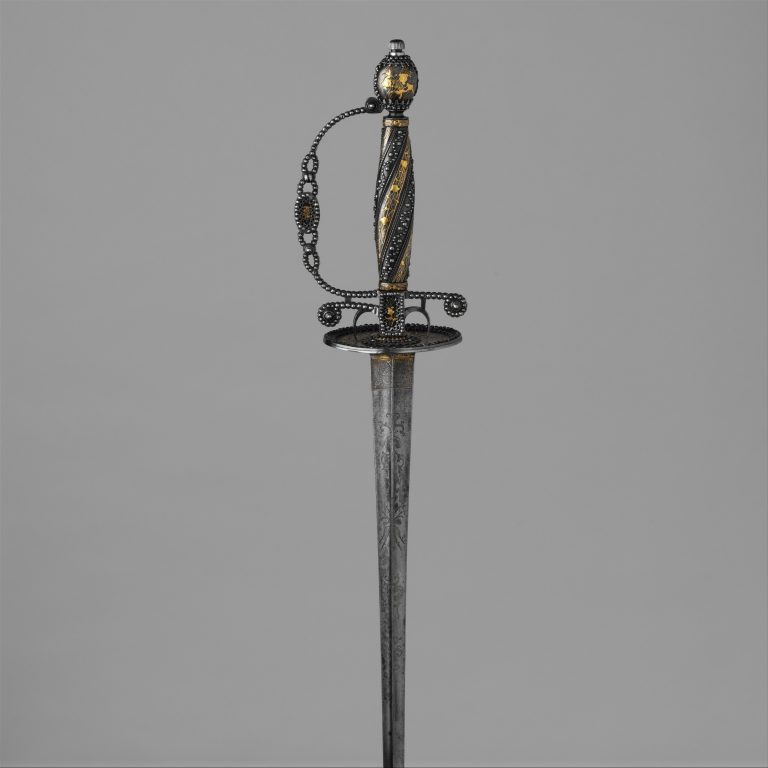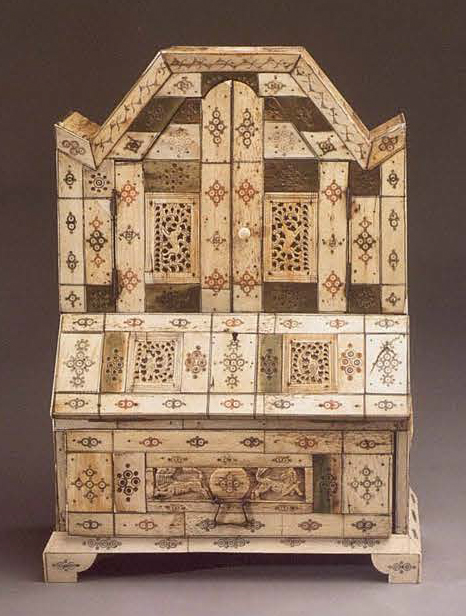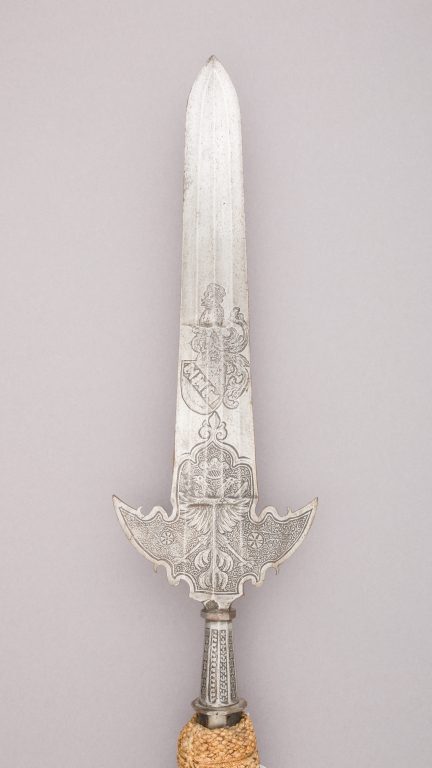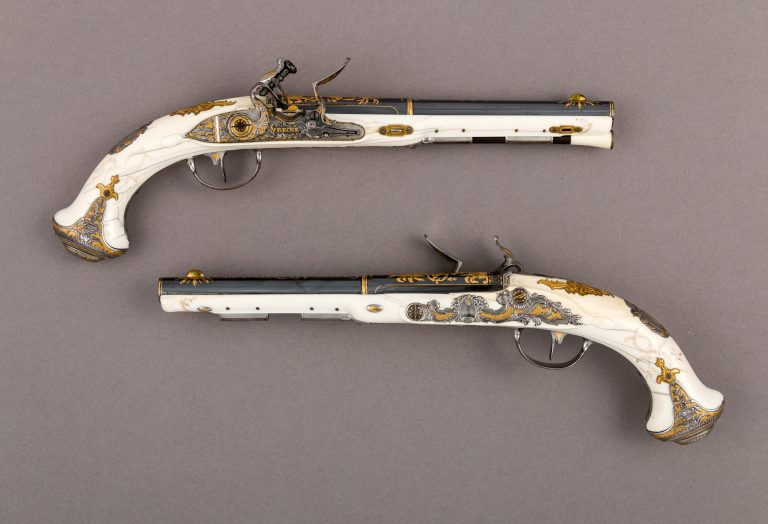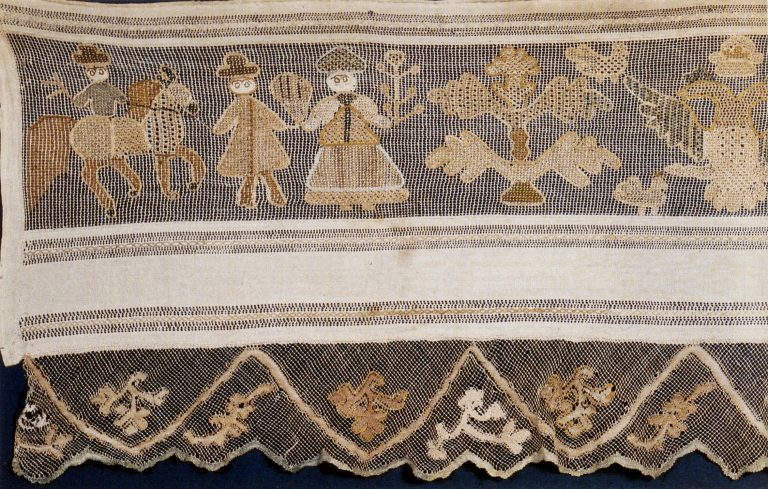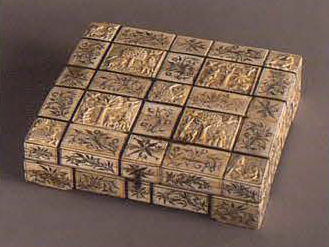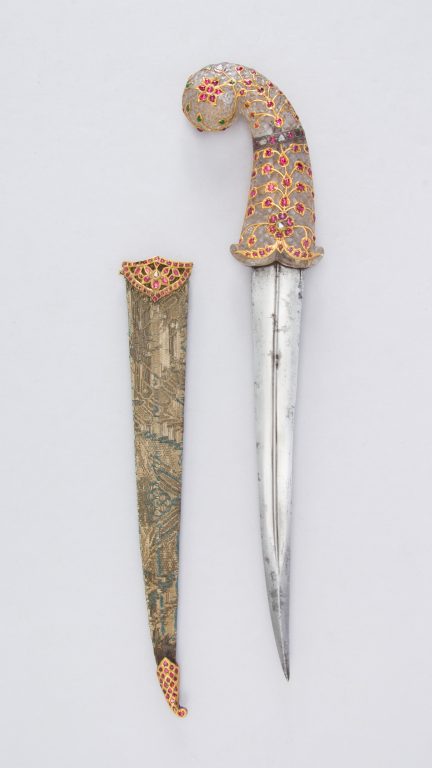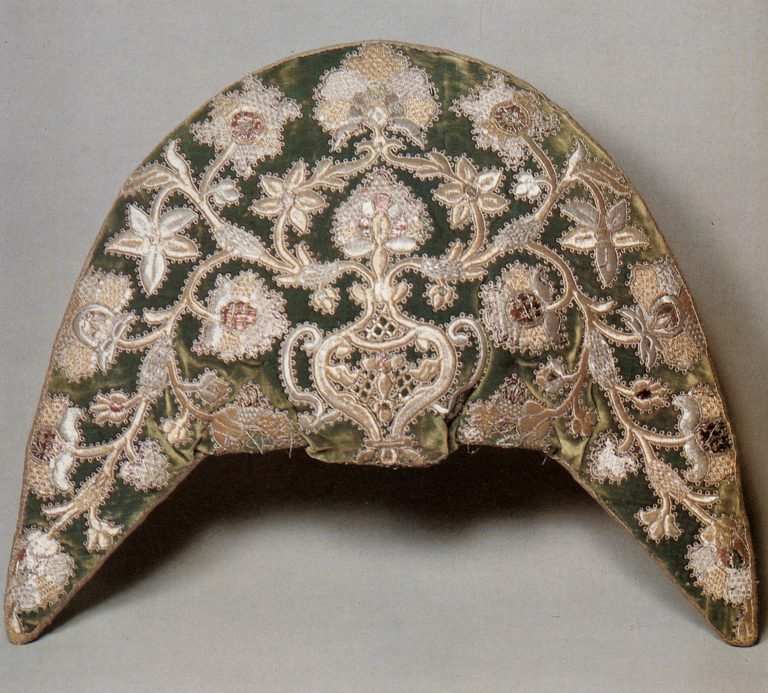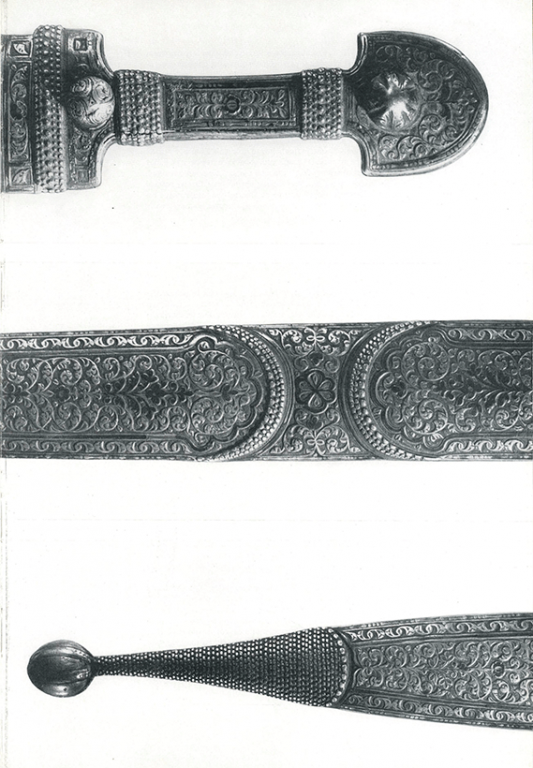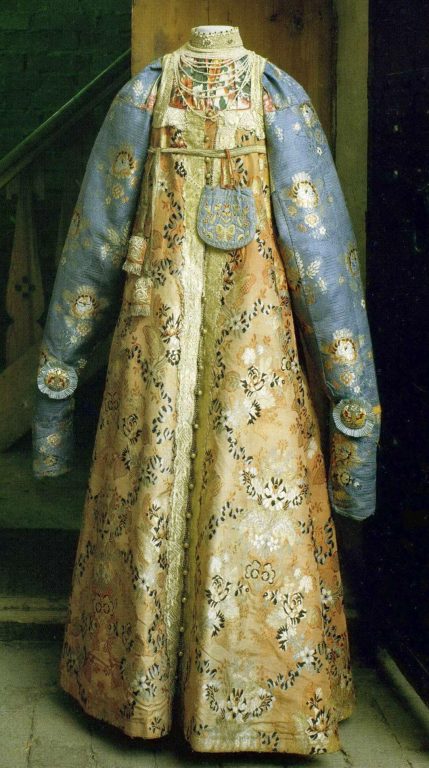

-
Object
-
Type of arts & crafts
-
MediumSteel, gold
-
SizeL. 38 3/4 in. (98.5 cm); L. of blade 31 3/4 in. (80.5 cm); W. 3 7/8 in. (9.8 cm); D. 2 3/4 in. (7 cm); Wt. 15.6 oz. (442.3 g)
-
Geography details
Town Tula -
Federal region today
-
Federal subject today
-
Dateca. 1775-80
-
Composition
-
Elements
-
Type of sourceDatabase “Metropolitan Museum of Art”
-
Fund that the source refers toMetropolitan Museum of Art
-
By the early seventeenth century, the rapier, a long slender thrusting sword, began to dominate as the gentleman’s weapon of choice. During the course of the century, however, as civilian fencing techniques became more specialized and refined, the rapier developed into a lighter, trimmed-down weapon known by about 1700 as the smallsword. Smallswords, often richly decorated, remained an integral part of a gentleman’s wardrobe until the wearing of swords in civilian settings went out of fashion at the end of the eighteenth century, at which time pistols were replacing swords as arms most frequently used in personal duels. The majority of smallsword hilts are made of silver or steel, but many also employ a wide variety of luxurious materials, such as gold, porcelain, and enamel. At their best, smallswords combine the crafts of swordsmith, cutler, and jeweler to create an elegant weapon that was also a wearable work of art.


